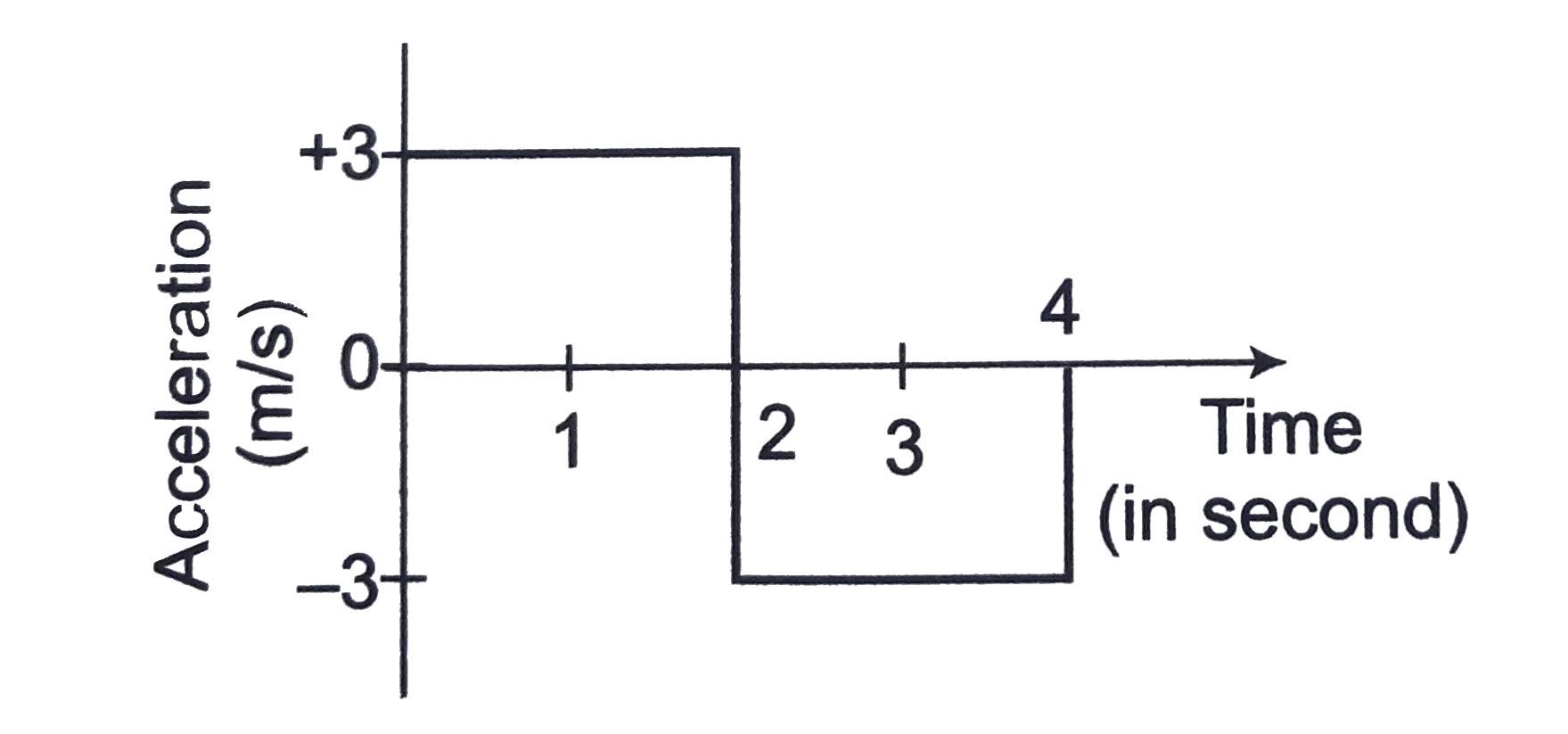A particle starts from the origin with a velocity of 10ms−1 and moves with a constant acceleration till the velocity increases to 50ms−1. At that instant, the acceleration is suddenly reversed. What will be the velocity of the particle, when it returne to the starticng point?
Zero
10ms−1
50ms−1
70ms−1
The correct Answer is:D
To solve the problem step by step, we will break it down into two phases: the first phase where the particle accelerates from 10 m/s to 50 m/s, and the second phase where the particle decelerates back to the starting point.
Step 1: Determine the acceleration during the first phase
We know:
- Initial velocity (u) = 10 m/s
- Final velocity (v) = 50 m/s
Using the equation of motion:
v2=u2+2as1
where s1 is the distance traveled during the first phase and a is the acceleration.
Rearranging the equation gives:
a=v2−u22s1
Step 2: Calculate the distance traveled in the first phase
Substituting the values into the equation:
502=102+2as1
2500=100+2as1
2400=2as1
s1=24002a=1200a
Step 3: Determine the distance during the second phase
In the second phase, the particle starts with an initial velocity of 50 m/s and comes to a stop (final velocity = 0 m/s). Using the same equation of motion:
0=502+2(−a)s2
where s2 is the distance traveled during the second phase.
Rearranging gives:
0=2500−2as2
2as2=2500
s2=25002a=1250a
Step 4: Calculate the total distance traveled
The total distance traveled (s) when the particle returns to the starting point is:
s=s1+s2
Substituting the values we found:
s=1200a+1250a=2450a
Step 5: Find the velocity when returning to the starting point
Now, we need to find the velocity when the particle returns to the starting point. The total distance traveled is 2450a.
Using the equation of motion again:
v2=u2+2as
Here, u=0 (when it returns to the starting point), and s=2450a:
v2=0+2a(2450a)
v2=2⋅2450
v2=4900
v=√4900=70 m/s
Final Answer
The velocity of the particle when it returns to the starting point is 70 m/s.
- Initial velocity (u) = 10 m/s
- Final velocity (v) = 50 m/s
v2=u2+2as1
where s1 is the distance traveled during the first phase and a is the acceleration.
a=v2−u22s1
502=102+2as1
2500=100+2as1
2400=2as1
s1=24002a=1200a
0=502+2(−a)s2
where s2 is the distance traveled during the second phase.
0=2500−2as2
2as2=2500
s2=25002a=1250a
s=s1+s2
Substituting the values we found:
s=1200a+1250a=2450a
v2=u2+2as
Here, u=0 (when it returns to the starting point), and s=2450a:
v2=0+2a(2450a)
v2=2⋅2450
v2=4900
v=√4900=70 m/s
The velocity of the particle when it returns to the starting point is 70 m/s.
Topper's Solved these Questions
- KINEMATICS-1BOOK - CENGAGE PHYSICS ENGLISHCHAPTER - KINEMATICS-1EXERCISE - Graphical Concept
17 Videos
- KINEMATICS-1BOOK - CENGAGE PHYSICS ENGLISHCHAPTER - KINEMATICS-1EXERCISE - Graphical cancept
1 Videos
- KINEMATICS-1BOOK - CENGAGE PHYSICS ENGLISHCHAPTER - KINEMATICS-1EXERCISE - Subjective
29 Videos
- GRAVITATIONBOOK - CENGAGE PHYSICS ENGLISHCHAPTER - GRAVITATIONEXERCISE - INTEGER_TYPE
1 Videos
- KINEMATICS-2BOOK - CENGAGE PHYSICS ENGLISHCHAPTER - KINEMATICS-2EXERCISE - Exercise Integer
9 Videos
Similar Questions
A particle starts from the origin at t = 0 s with a velocity of 10.0ˆj m/s and moves in plane with a constant acceleration of (8ˆi+2ˆj)ms−2. The y-coordinate of the particle in 2 sec is
View SolutionA particle starting from rest attains a velocity of 50ms−1 in 5 s. The acceleration of the particle is
View SolutionA particle starts from rest and moves with constant acceleration. Then velocity displacement curve is:
View SolutionA particle starts from the origin at t=Os with a velocity of 10.0ˆjm/s and moves in the xy-plane with a constant acceleration of (8ˆi+2ˆj)m/s−2. What time is the x-coordinate of the particle 16m?
View SolutionA body starts from rest and acquires a velocity 10 m s−1 in 2 s. Find the acceleration.
View SolutionA body starts with initial velocity u and moves with uniform accelelration . When the velocity has increased to 5u, the acceleration is reversed in direction, the magnitude remaining constant. Find its velocity when it returns to the strating point?
View SolutionStarting from rest, the acceleration of a particle is a=2(t-1). The velocity of the particle at t=5s is :-
View SolutionA particle starts from rest at t=0 and moves in a straight line with an acceleration as shown below. The velocity of the particle at t=3 s is

View SolutionA particle starts from origin at t=0 with a velocity of 15ˆims−1 and moves in xy-plane under the action of a force which produces a constant acceleration of 15ˆi+20ˆjms−2. Find the y-coordinate of the particle at the instant its x-coordinate is 180 m.
View SolutionA particle starting from rest moves along a straight line with constant acceleration for this velocity displacement graph will have the form-
View Solution
